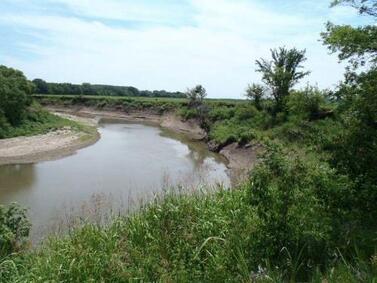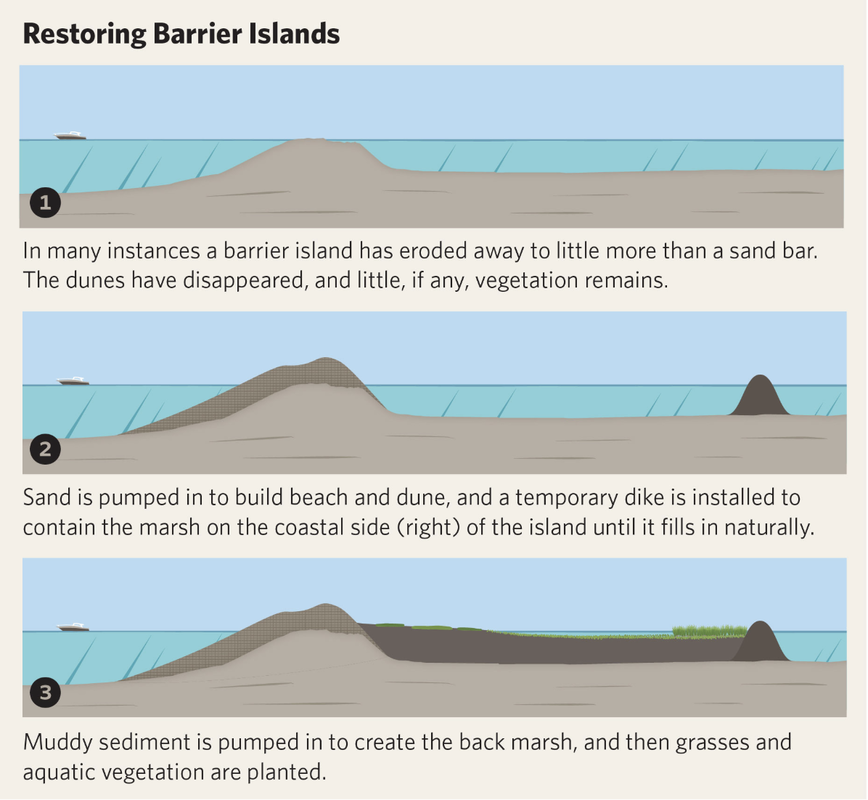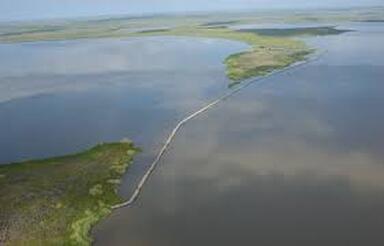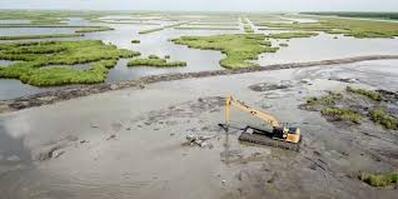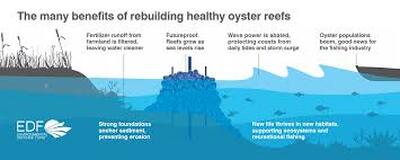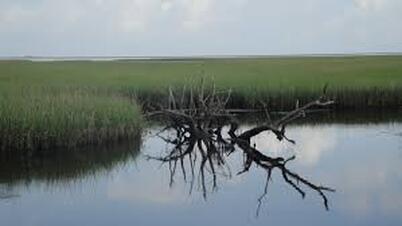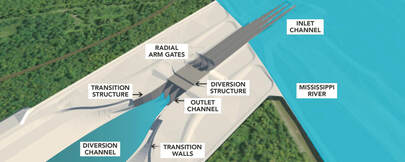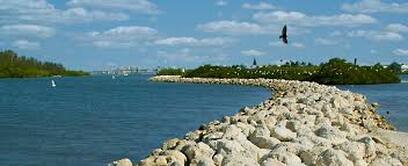|
1. Restoration
Bank Stabilization: the onshore placement of earthen fill and vegetation planting designed to reduce wave energies and maintain shorelines in open bays, lakes, and bayous. This process makes it more difficult for erosion to happen in banks because it strengthens the rigidity of the sediments to various roots. Barrier Island Restoration: the creation and restoration of barrier islands. Barrier islands protect the coastlines from severe storm damage and harbor several habitats that are refuges for wildlife. The image to the left explains the formation of Barrier Islands. Hydrologic Restoration: the creation of pathways for fresh water to areas that do not receive any due to man-made causes, such as levees or oil channels. Marsh Creation: establishment of new wetlands in open water areas such as bays, ponds, and canals through sediment dredging and placement. Oyster Barrier Reef: a bioengineered reef that increases oyster breeding and reduces the force of wave energies. Ridge Restoration: use of dredging, sediment placement, and vegetative plantings to restore natural ridge functions in basins. Unnatural processes are one of the biggest causes for coastal erosion. Returning to natural ridge functions would help undo some of the man-made constructions. Sediment Diversion: use of channels and/or structures to divert sediment and fresh water from the Mississippi and Atchafalaya Rivers into adjacent basins. Diversions are used to strengthen weak wetlands and coastal areas with sediment from one of the two rivers. Shoreline Protection: rocks near the shore that reduce wave energies on shorelines surrounding open bays, lakes, sounds, and bayous. Rocks on the shore reduce the force the waves have. 2. Nonstructural Risk Reduction: projects that elevate and flood-proof buildings and help property owners prepare for flooding or move out of areas of high flood risk. 3. Structural Protection: projects that reduce flood risk by acting as physical barriers against storm surge. These systems can include earthen levees, floodwalls, floodgates, and pumping stations. |
Bank Stabilization
Barrier Island Restoration Hydrologic Restoration Marsh Creation Oyster Barrier Reef Ridge Restoration Sediment Diversion Shoreline Protection |
Definitions and Terms Taken from 2017 Coastal Master Plan
